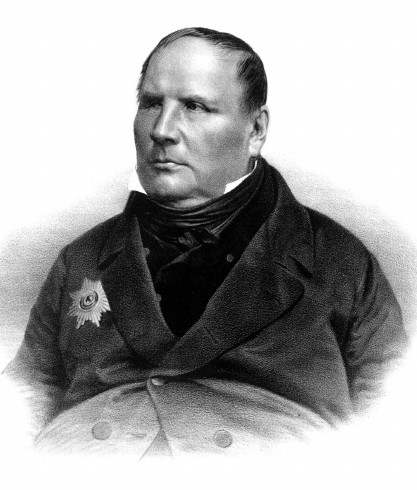Ostrohradsky, Mykhailo V.
Ostrohradsky, Mykhailo V. [Остроградський, Михайло; Ostrohrads’kyj, Myxajlo] (Ostrogradsky, Mikhail), b 24 September 1801 in Pashenna, (now Pashenivka), Kobeliaky county, Poltava gubernia, d 1 January 1862 in Poltava. Mathematician (student of Timofei Osipovsky) from the Ostrohradsky Cossack starshyna family; member of the Academy of Sciences in Saint Petersburg (from 1831), New York City (from 1834), Turin (from 1841), Rome (from 1853), and Paris (from 1856). He graduated from Kharkiv University (1820). He continued his studies in Paris at the Collège de France in 1822. From 1828 he taught mathematics in Saint Petersburg at the Naval Academy, the Institute of Roads and Communications, the Main Pedagogical Institute, the Main Engineering School, and the Main Artillery Academy. He wrote textbooks on analytical mechanics, algebra, differential and integral calculus, and analytical geometry. Most of his essays (written in French) appeared in the proceedings and annals of the Saint Petersburg Academy of Sciences. He contributed to diverse fields of applied mathematics, including ballistics, hydromechanics, hydrodynamics, potential theory, heat, elasticity, and astronomy.
His most famous theorem is on the reduction of an integral over an n-dimensional space to one over its boundary. A special case for this theorem for three-dimensional space is known as Gauss’s theorem (aka théorème d’Ostrogradsky in French). He was also the first to prove a theorem in linear differential equations known as Abel’s theorem. Ostrohradsky was a friend of Taras Shevchenko, who mentioned him in his diary and in his novel Khudozhnik (The Artist, 1887), in which he called Ostrohradsky a mathematical genius. In 1952 Borys Hniedenko wrote a monograph about Ostrohradsky.
Roman Voronka
[This article originally appeared in the Encyclopedia of Ukraine, vol. 3 (1993).]
